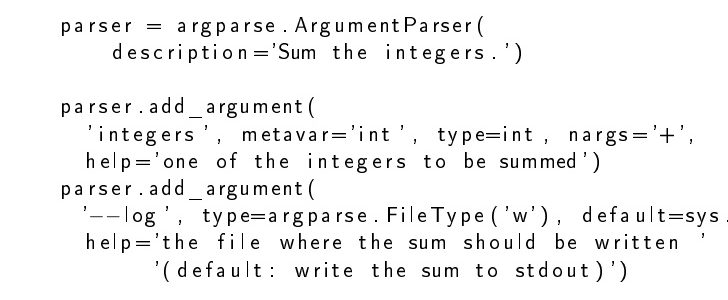
Pythons argparse for dummies
Python is a great language, but sometimes it makes life more complicated than necessary. I don’t know if this is because it’s heritage (C) or whether its creator is Italian 😉
Compared to Ruby which is created to “stay away” and make the programmers life as easy as possible, Python sometimes makes you read more documentation that you have ever expected.
The argparse library is a good example. If three weeks passes, I need to Google for examples on how to setup the darned thing. Instead of explaining the simple options that 99% of all users are interested in, it lists one complicated variant after another.
Therefore I have decided (for my own sake) to make a short and sweet Ruby-esqe documentation of this library
STRINGS or INTEGERS or FLOATS
Do this 99% of the time:
import argparse parser = argparse.ArgumentParser() parser.add_argument( '-p') args = parser.parse_args() print(args.p)
If you dont give this argument, args.p will be None
peter@monster> python parm.py None
If you give the argument -p, but no value, it will barf
peter@monster> python parm.py -p usage: parm.py [-h] [-p P] parm.py: error: argument -p: expected one argument
if you want a long option
parser.add_argument( '-p', '--product')
if you want it REQUIRED
parser.add_argument( '-p', '--product', required=True)
if you want a DEFAULT value
parser.add_argument( '-p', '--product', required=True, default="AAPL")
If you want the argument to be something other than STRING
parser.add_argument( '-n', '--number', type=integer)
FLAGS
Sometimes you want to pass a flag without a value. Skip your initial ideas about params of type bool with default values etc etc. DO THIS INSTEAD:
parser.add_argument('-w', action='store_true')
and args.w will be True or False